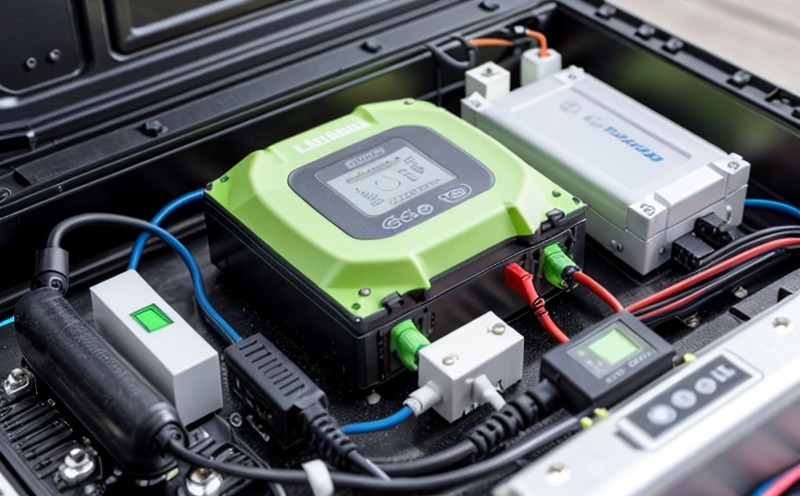ANSI C18.4M Lithium-Ion Battery Testing for Household Applications
The ANSI C18.4M standard is a crucial document that sets out detailed requirements and procedures for the testing of lithium-ion batteries used in household applications, including but not limited to cordless power tools, vacuum cleaners, and other portable devices. This service ensures compliance with safety regulations designed to protect consumers from potential hazards such as overheating, short-circuiting, or even explosions.
Testing under ANSI C18.4M involves a series of rigorous procedures aimed at evaluating the performance, durability, and safety features of these batteries. The tests cover various aspects including electrical characteristics, thermal stability, mechanical strength, and abuse conditions like overcharging, over-discharging, and drop testing. Compliance with this standard is essential for manufacturers to ensure their products meet high safety standards before reaching the market.
Our laboratory adheres strictly to ANSI C18.4M guidelines when conducting tests. We use state-of-the-art equipment calibrated to international standards to achieve accurate results. Our technicians are highly trained and experienced in handling lithium-ion batteries safely, ensuring that every test conducted is both reliable and reproducible.
Compliance with ANSI C18.4M can significantly benefit manufacturers by providing them with valuable insights into the performance of their products under various conditions. This information helps identify areas for improvement and enhances overall product quality. Additionally, meeting these standards opens up access to new markets where stringent safety requirements are in place.
For quality managers looking to verify the reliability of their products or procurement teams seeking to ensure suppliers meet necessary criteria, ANSI C18.4M testing offers a critical service. By partnering with us, you can rest assured that your lithium-ion batteries will undergo thorough evaluation ensuring they comply with all relevant standards.
Our comprehensive approach ensures not only compliance but also provides detailed reports highlighting any issues found during the testing process along with recommendations for improvement where necessary. This level of transparency helps manufacturers maintain confidence in their products while meeting regulatory requirements.
The importance of ANSI C18.4M cannot be overstated, especially given the growing number of portable electronic devices that rely on lithium-ion batteries. As technology continues to evolve, so too must our understanding of how best to test and validate these components. By staying current with industry trends and updates to standards like ANSI C18.4M, we remain at the forefront of ensuring safe and reliable products.
In summary, ANSI C18.4M Lithium-Ion Battery Testing for Household Applications is a vital service that guarantees product safety, enhances brand reputation, and facilitates market entry into regions with strict regulatory frameworks. Our commitment to precision, accuracy, and thoroughness makes us the ideal partner for any organization seeking reliable testing solutions.
Applied Standards
| Standard Number | Description |
|---|---|
| ANSI C18.4M-2021 | Lithium-Ion Battery Safety Requirements and Test Procedures for Household Applications |
| IEC 62619:2015 | Safety of rechargeable small battery-operated appliances, including portable tools and similar equipment - Particular requirements and test procedures |
The ANSI C18.4M-2021 standard provides comprehensive guidelines for testing lithium-ion batteries used in household applications. It covers various aspects such as electrical characteristics, thermal stability, mechanical strength, and abuse conditions like overcharging, over-discharging, and drop testing.
IEC 62619:2015 complements ANSI C18.4M by offering additional requirements specific to rechargeable small battery-operated appliances including portable tools and similar equipment. This international standard ensures that the batteries meet stringent safety criteria.
Benefits
- Ensures compliance with regulatory requirements
- Enhances product reliability and performance
- Reduces risk of product recalls due to safety concerns
- Safeguards end-users from potential hazards like overheating or explosion
- Promotes brand reputation through demonstrated adherence to high standards
- Facilitates easier market access into regions with strict regulations on battery safety
- Identifies areas for improvement and enhances overall product quality
- Provides detailed reports highlighting any issues found during the testing process along with recommendations for improvement where necessary
The benefits of ANSI C18.4M Lithium-Ion Battery Testing extend beyond mere compliance; they contribute significantly to enhancing the safety, reliability, and marketability of household electronic products.
Industry Applications
- Cordless power tools
- Vacuum cleaners
- Electrical toys and games
- Battery-powered medical devices
| Test Procedure | Description |
|---|---|
| Overcharge Resistance Test | Determines the battery's ability to withstand prolonged charging without damage. |
| Short-Circuit Protection Test | Evaluates the effectiveness of internal protection mechanisms against short-circuits. |
| Impact and Vibration Tests | Assesses how well the battery performs after experiencing physical shocks or vibrations. |
The testing procedures outlined in ANSI C18.4M cover a wide range of scenarios that mimic real-world usage conditions for household applications. These tests help manufacturers ensure their batteries are robust enough to handle everyday demands while remaining safe under adverse circumstances.





